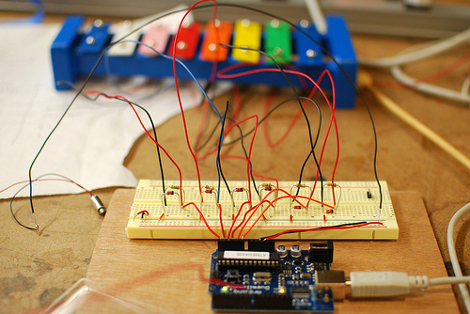
We’ve featured several different ways to roast coffee beans over the years. This is the next logical step. [Nightlife31] shows us how to use an Arduino and a popcorn popper to create a fully automated coffee bean roaster. You’ll have to modify your popcorn machine to be controllable. This means installing your temp sensor and relays. You can see a basic schematic for that in the project page. The rest involves making a fairly simple circuit on an Arduino protoboard attachment. The end result is quite nice. We wouldn’t mind waking up to some freshly roasted coffee beans in the morning. We’ve seen these done with PID controls, and directly controlled by a computer. There’s even this one that has a much more involved build with a convection oven mounted on top instead of a popcorn popper.














